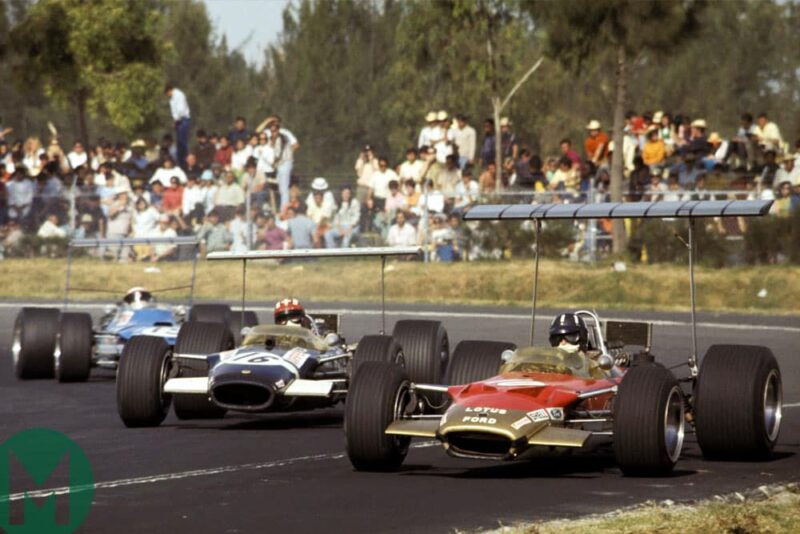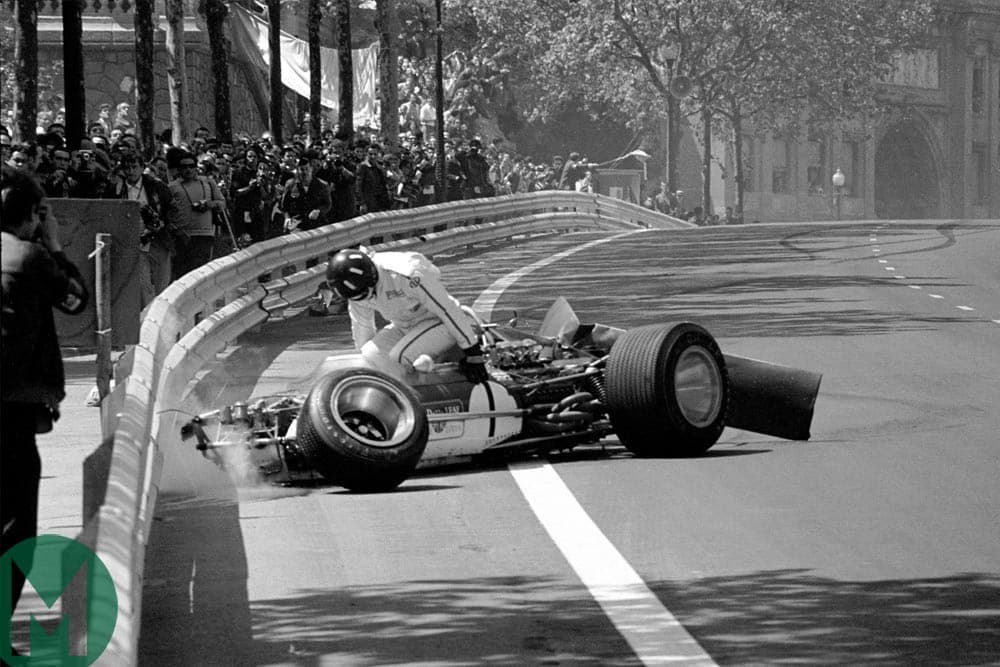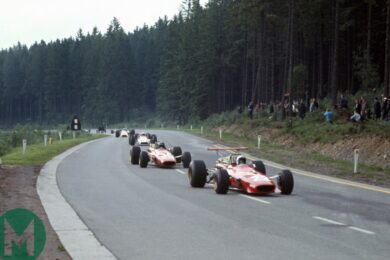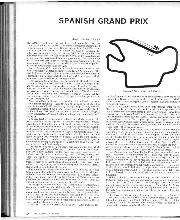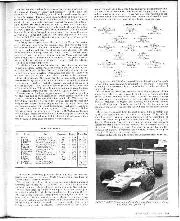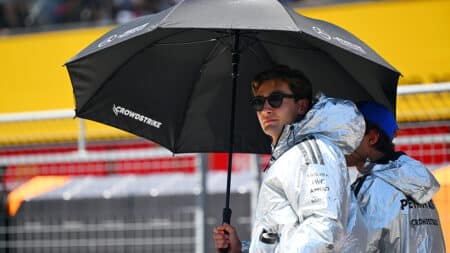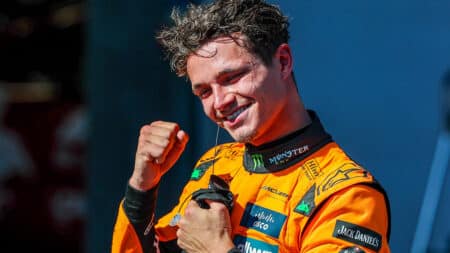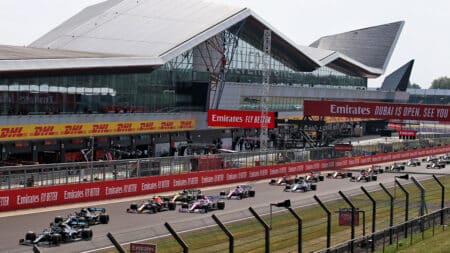As he had been when F1 put its horse behind the cart 10 years previously, Chapman was slow to mine the sport’s new performance parameter. When finally he got to grips with wings, however, his aerofoil overshadowed all others: almost as wide as the rear track and 4ft tall, it was mounted on two spindly struts without triangulation that were attached to the uprights.
A young and inexperienced Jackie Oliver, already in the impossible position of replacing the late great Jim Clark in the category’s fastest car, was not entirely convinced.
“I was the guinea pig,” he says. “The first time I saw the aerofoil on my car was at Rouen [for the 1968 French GP]. It was bigger than Graham’s and I was suspicious.
“When the dust settled I thought I was in heaven because I could see these large wrought-iron gates.”
“So I gave it a little push sideways and it went ‘Wong! Wong! Wong!’ on rubber bushes. Colin said, ‘Look, lad, when a 707 takes off, its wings sag. They have to so they don’t break.’
“I don’t know for sure what caused my accident. Dickie Attwood saw me in his mirrors and moved to let me through. We swapped sides at 180mph. It was a strong manoeuvre and I think that, plus his BRM’s turbulence, caused a strut to fail. Downforce became lift and I lost control.
“When the dust settled I thought I was in heaven because I could see these large wrought-iron gates (below). Actually that was something I said later. I didn’t have that thought at the time. Colin said I was as white as a sheet.”
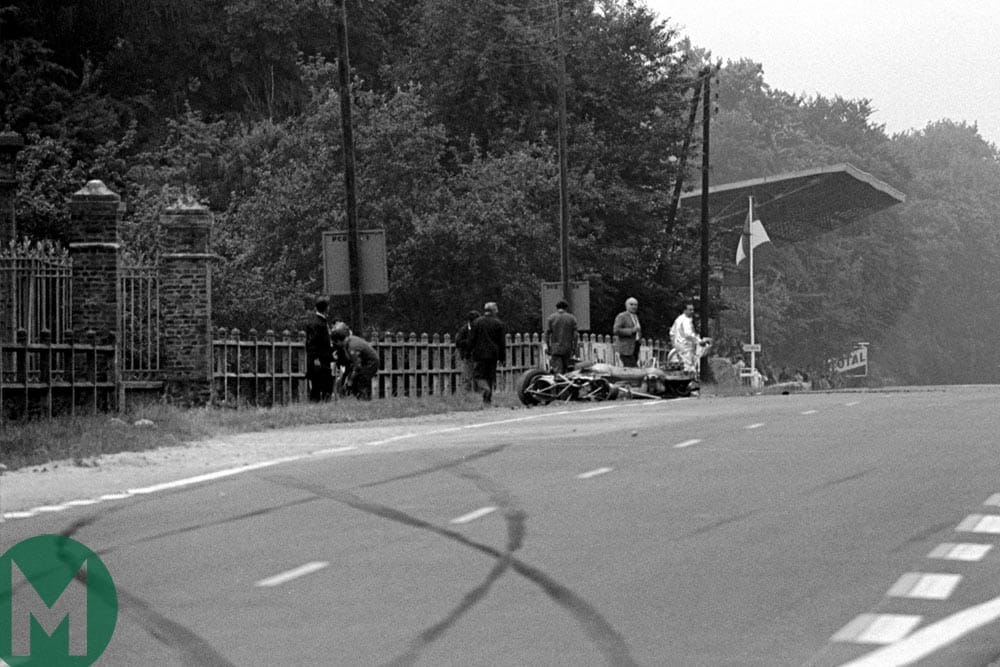
Chapman surmised for a time that gearbox had been torn from engine by wing. In fact Oliver had struck the curving abutment to those gates.
The new forces were being both over- and underestimated.
Peter Wright, who almost 10 years later would seal ground effect for Lotus, says: “Colin had an instinct – later backed by a bit more science – as to why something should work. If he believed in it, he’d stick with it.
“But we were in an unknown area and didn’t have the tools. Had we known more we would have been scared stiff. Calculations – best estimates – were slow but the need for a wing was pressing.”
Jacky Ickx’s win for Ferrari at Rouen – the first for an F1 car equipped with a rear aerofoil – ensured that the warning signs would go unheeded by F1’s ‘unreasonable men’.
“The car jumped from one side of the track to the other. That’s how it was then.”
Matra introduced a feathering system using levers operated by a solenoid energised by a contact beneath the brake pedal.
Brabham (below) fitted hub-mounted wings front and rear.
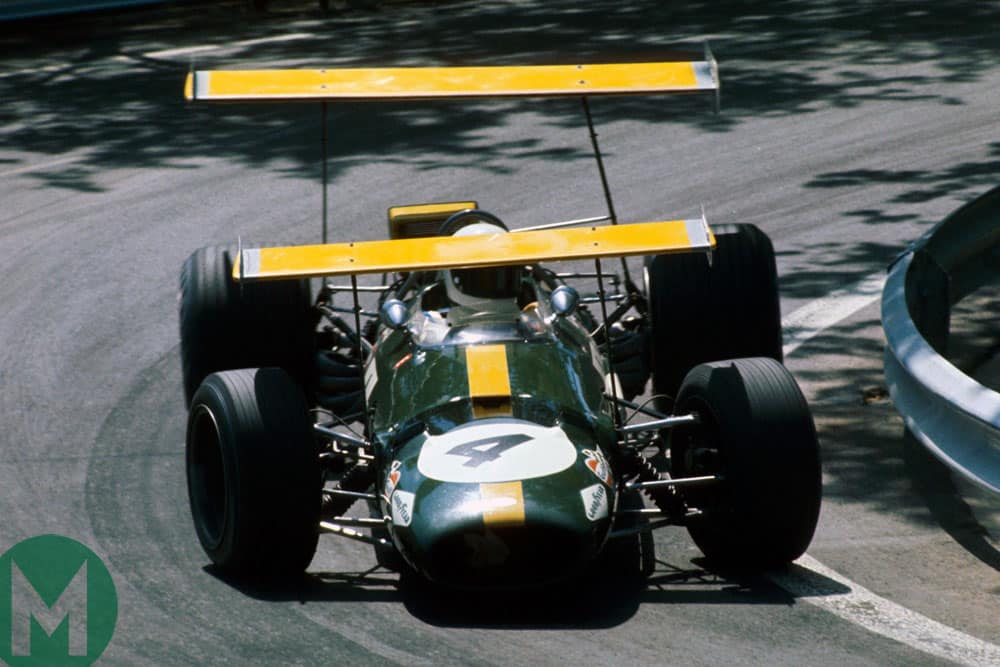
And Lotus – the tallest tree in the forest – went driver-adjustable just prior to the championship-decider in Mexico City. Its method was low-tech: Bowden cable attached to a fourth pedal pulling against bungees that otherwise held the wing shut.
One bungee snapped early in the race. Fortunately the other held – “It was a bit hairy” – and Hill became world champion a second time.
Lotus suffered several more rear wing failures – at Australia’s Lakeside, Kyalami and Brands Hatch – in the early part of 1969.
Even pragmatic Brabham – its hand forced by Chapman’s unchecked development in an unexplored area – suffered them.
“Everybody was experimenting,” says Wright, then at BRM. “Tasked with a self-adjusting wing, mine was electro-hydraulic. John Surtees did a couple of laps before pressing its button on the steering wheel. He came straight back in: ‘Hmm, interesting. The car jumped from one side of the track to the other.’ That’s how it was then.”
For this is what it took to win now.
And Rindt was desperate to win finally in F1.
So he watched bemusedly as mechanics rushed to widen his wing (by 12in) and add a trailing lip to its central section using aluminium sheet and polystyrene from packing cases (below).
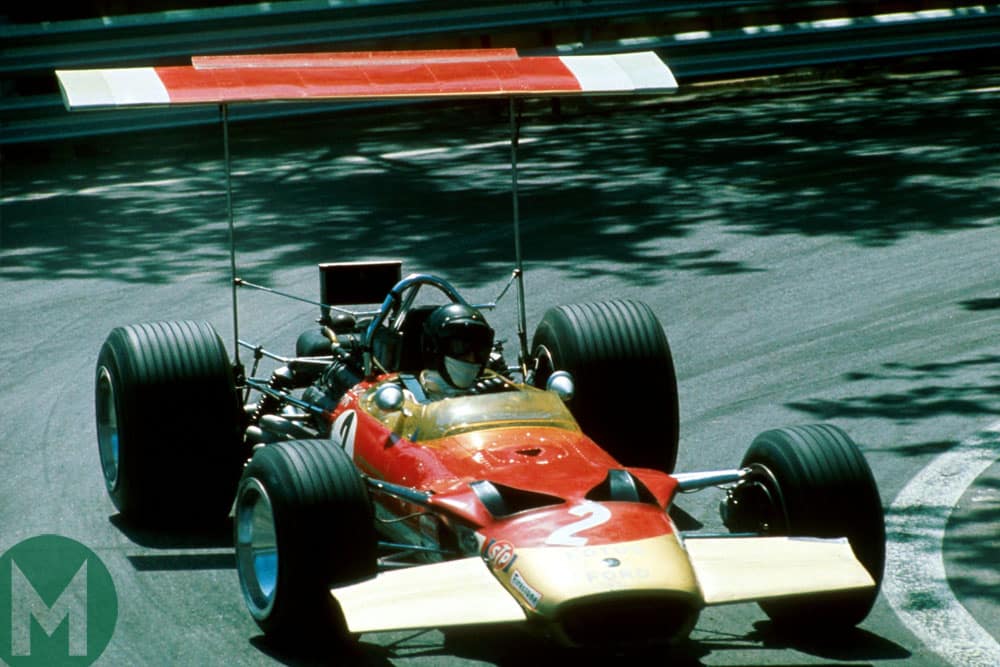
Chapman pointed out that he was not breaking any rule. There was none to break indeed.
Rindt qualified on pole; Hill lined up third. But Chapman was unsatisfied. Bigger was faster and so he was furious to discover that the last piece of aluminium sheet had been used for another purpose.
Rindt led, too, but that wing-on-a-prayer soon began to sag and fold.
A spectating Hill sent warning word. Too late.
The governing body was inclining to agree with Rindt. That the wing on Ickx’s Brabham had exploded and scattered like confetti directly in front of its officials in Barcelona probably clinched it.
Its Commission Sportive Internationale evoked a ‘safety clause’ during the subsequent Monaco GP to have the times set in first practice annulled and the wings removed overnight and for the remainder of the meeting.
